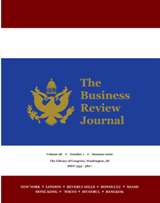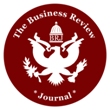|
Problem Definition, Brainstorming, and Incremental Economic Decision Making
Rules: A Case Study
Dr. John E.
Knight, Professor, University of Tennessee at Martin, TN
ABSTRACT
Efficiently and
effectively solving business problems requires a systematic and rational process
that involves defining the problem, numerical analysis of the problem,
brainstorming for potential solutions, using appropriate economic
decision-making tools, and finally implementing solutions that are most
economically rewarding. The final goal of this process is implementation. This
paper illustrates the interwoven nature of the process in the context of a
statistical case revolving around designing a system to meet a proposed time
limit for delivered pizzas. Problem definition and analysis, brainstorming and
economic decision making using a statistical case demonstrate how these concepts
interact and support one another. Case studies can provide students with real
life examples of how robust and interactive business concepts can be applied to
solving problems in a rational and systematic manner (Smith, 1987). Some
important concepts covered in this case study include a) defining the problem
in what, when, where and extent boundaries, b) collection of appropriate
statistical data, c) descriptive statistical analysis, d) determining
statistical significance through hypothesis testing to confirm repeatability of
patterns, e) brainstorming for potential solutions, f) prioritizing
brainstorming choices according to economic principles, and g) using data to
provide estimates of results of proposed solutions. Rational decision making
has been a focus of many business books and articles. Kepner and Tregoe (1997)
published a complete book on a rational process as defined by their method.
The book focused on the problem definition as the foundation of further
analysis. Their method developed a matrix that emphasized the identification of
specific boundaries of the problem. The matrix was an intersection of the more
specific segments of problem identification (what is the specific problem, where
is the problem in the process, when is the problem manifested and to what extent
is the problem occurring) crossed referenced with the two categories “Is” and
“Is not”. For example, two of the cross categories would be “when is the
problem” versus “is” and “is not”. By identifying precisely when the problem
occurs and when it does not occur helps focus the problem analyst’s mind on
potential sources of the problem specifically tied to the differentiation in
time. The other cross tab categories also provide specifications as to the
problem definition boundaries. Many other texts and articles populate the
literature on further methods to define a problem. The appropriate collection
of statistical data can be used to mathematically specify the problem further.
Data collection should first focus on planning so that the data specifically
relates to the problem identified and in a manner that is as close to being
random and representative as possible. In almost all situations, these specific
criteria cannot be perfectly met so consideration as to the ramifications needs
to be considered. Hahn and Meeker (1991) describe practical methods to attempt
to ensure that a selected sample meets the goals of being random and
representative as possible in the process of collecting data. Once appropriate
data has been collected and the deficiencies in the data considered, standard
statistical analysis can then proceed. Many statistical texts are available as
well as many different computer programs for the analysis of the data.
Full Text
*
Google
Scholar Index1 *
Google
Scholar Index2
|
|
Contribution to Thailand’s Tourism Policy: An Empirical Modelling Study
Dr. Tran Van
Hoa, Professor, Victoria University, Australia
Dr. Chau (Jo)
Vu, Victoria University Business School, Australia
Pham Quang Thao,
Vietnam Union of Science and Technology Associations, Vietnam
ABSTRACT
Thailand is the
world’s eighth tourism destination with 40m tourists and fourth tourism income
earner (USD61m) in 2019, due to its geographical, cultural, historical and
climatic attractions. In 2018, tourism income accounted for 7 per cent of its
GDP. In spite of these, a rigorous study of its tourism determination and
contribution to economic growth has been very limited. The
paper is a serious econometric study to investigate the determination of
Thailand’s tourism and its contribution to the country during the period
1996-2018 for use in credible data-based tourism policy analysis and
development. Significantly, for Thailand an open free-market economy, the study
is carried out appropriately from an economic integration (globalisation) growth
modelling approach, which is also the expenditure (as opposed to production or
income) perspective of the United Nations System of National Accounts 1998/2003.
Specifically, a multi-simultaneous equation model of Thailand’s endogenous
growth and tourism determination is developed. The model innovatively
incorporates gravity theory and classical consumer demand contributors,
Ironmonger-Lancaster new commodity attributes and Johansen policy impact add-
and sub-factors (i.e., reforms and crises) explicitly in its economic
integration structure. The model is then estimated by system methods with
official economic and tourism 1996-2018 data from the World Tourism Organisation
and international databases. The research will contribute to advances in the
literature and the findings provide useful insights and appropriate and much
needed evidence-based inputs on the determination and contributors of tourism to
Thailand’s growth. Recommendations will be provided to key stake-holders such as
tourism policy-makers (e.g., Tourism Authority of Thailand), academic
researchers, business analysts and tourism operators for effective national
strategic analysis and practical implementation. Thailand
is the world’s eighth tourism destination with 40m tourists and fourth tourism
income earner (USD61m) in 2019, due to its geographical, cultural, historical
and climatic attractions. In 2018, tourism income accounted for 12.1 per cent of
its GDP. In spite of these, a rigorous study of Thailand’s tourism determination
and contribution to economic growth has been very limited. The
paper is a serious econometric study to investigate the causes of Thailand’s
tourism and its contribution to the country during the period 2000-2018 for
credible data-based policy analysis. Significantly, for Thailand an open
free-market economy, the study is carried out appropriately from an economic
integration (globalisation) growth modelling approach, which is also the
expenditure (as opposed to conventional production or income) perspective of the
United Nations System of National Accounts 1998/2003. Specifically, a
multi-simultaneous equation model of endogenous globalisation-based growth and
Thailand’s tourism determination is developed. The model innovatively
incorporates gravity theory and classical consumer demand contributors,
Ironmonger-Lancaster new commodity attributes and Johansen policy impact add-
and sub-factors (i.e., reforms and crises) explicitly in its economic
integration structure. The model is then estimated by system methods with
official economic and tourism 2000-2018 data from the World Tourism Organisation
and international databases. The research will contribute to advances in the
literature and the findings provide useful insights and appropriate and much
needed evidence-based inputs on the determination and contributors of tourism to
Thailand’s growth. Recommendations will be provided to key stake-holders such as
tourism policy-makers such as Tourism Authority of Thailand, academic
researchers, business analysts and tourism operators for national strategic
policy analysis and practical implementation.
Full Text
*
Google
Scholar Index1 *
Google
Scholar Index2
|
|
The Necessity of Introducing Public Warehousing in Vietnam
Dr. Laszlo
Kozar, Professor, Budapest Business School, Hungary
Dr. Tamas Kozak,
Associate Professor, Budapest Business School, Hungary
ABSTRACT
This study is based on seven-year-long history of connection building, lecturing
and examinations of Vietnamese and international sources, furthermore, based on
primary research in acquiring direct information from several academic and
non-academic experts and prestigious market participants on the examined
market. Vietnam has one of the strongest agricultural production potentials in
several fields of agriculture: in case of coffee and rice production it is one
of the leading producers and exporters. The economy of the country is rapidly
developing however the commodity financing system and instruments need
considerable development and modernization. Based on my ten-year-long primary
and secondary research in this field I propose the development of public
warehousing and Lombard financing based on agricultural products. The use of
the functions of this institution could help grain market participants, such as
producers, manufactures, traders, and financiers for convenient business
decisions, price, and credit risk management, and able to involve extra
financing resources to the Vietnamese agriculture. Beyond market participants
advantages, this solution can help to reach market regulation and stockpiling
strategy goals for Vietnamese Government. This technique offers a relatively new
solutions but could contribute to the further development of this field while
this method can eventually be used in other sectors of the Vietnamese economy as
well. Vietnam is one of the most prominent countries of the Southeast Asian
region, one of the ten members of the Association of Southeast Asian Nations
(ASEAN) that seems to be one of the most rapidly growing economic hubs of the
world nowadays. In its half-century history of ASEAN, its members have been
among the most spectacularly developing countries in the world. The member
countries in total represent a population of over 600 million people, which - in
case of the continuation of the economic growth and increasing incomes –
foresees considerable growth in consumption for the coming decades. According to
its population ASEAN is bigger than the European Union or the United States, it
is the third largest market in the world, behind only India and China. For more
than a decade, authors have been investigating the market opportunities inherent
in the Southeast Asian region, publishing results, and based on secondary and
primary research, I believe that the introduction and operation of public
warehousing in Vietnam can be a viable business solution from which all
stakeholders could benefit. Vietnam has a very huge potential for crop
production. Annually 30 million tons of rice, 10 million tons of maize and 10
million tons of coffee (and several other crops in huge masses) are harvested.
This enabled Vietnam to be among the biggest exporters of the world. However,
the procurement system of crops, including an advanced form of pre-financing is
missing. Therefore, the producers face difficulties in their financial liquidity
as well, and there are huge gaps in the logistic system of the supply chain. In
general, it can be underlined that the concept of the electronic agricultural
purchasing marketplace may work anywhere that embodies a novel approach to
today’s agriculture based on modern technologies offering an opportunity to both
agricultural producers and suppliers (Erdeiné Késmárki-Gally, 2018).
Full Text
*
Google
Scholar Index1 *
Google
Scholar Index2
|
|
Why are Retailers Building Marketplaces?
Dr. Tamas Kozak,
Associate Professor, Budapest Business School, Hungary
Dr. Laszlo
Kozar, Professor, Budapest Business School, Hungary
ABSTRACT
In addition to offering a more diverse product range without the need for stock,
marketplace technology can be a powerful tool for building brand engagement,
enthusiasm, and loyalty, if done right. Especially for smaller brands or those
just starting out, it is increasingly difficult to compete with the big guys
when it comes to marketing spend. However, a marketplace model as part of a
commercial strategy can be used to build community, attract new customers, and
keep them coming back again and again, and differentiate your brand from
competitors. For brands and retailers, expanding product offerings is an
opportunity to increase revenues, but also to show customers that they are being
listened to and to build brand loyalty. Offering an expanded, curated product
assortment through an owned marketplace, but not an unlimited assortment, is a
great way to identify customer needs and gather critical data. When the right
range is curated to suit their lifestyle, customers feel that the range has been
built with them in mind. Investing in resources that share trusted guidance and
advice - in addition to the products in the retailer's category - is a great way
to build community, increase brand awareness, and keep shoppers coming back
again and again. Blogs, videos, tips, volunteer opportunities and ongoing
shopper interactions in general lead to more frequent, "stickier" sales,
especially when virtual shelves are stocked with repeat purchase items that
regularly make it onto the family shopping list. The research paper explored how
retailers and brands have an opportunity to curate enticing product expansion
segments without the traditional risk of stock-outs, and how marketplaces can be
used to great effect to reach new audiences, build brand enthusiasm, and drive
significant revenue. They will analyze how the marketplace model fits with
existing business lines, how to integrate the offering into their overall
commerce technology stack in collaboration with e-commerce platforms, and what
are the key disruptive technology drivers for building new business models.
Increasingly, customers are turning to online marketplaces to find what they
want to buy, both B2C and B2B. An online marketplace, either as an operator or
as a seller in such a marketplace, can increase the customer base and sales. It
all depends on getting the retailers' strategy right, it is worth analyzing why
online marketplaces are boosting their business and what retailers need to know
to create their own successful marketplace. For many retailers, the most common
use for launching an online marketplace is to expand their assortment. The most
successful marketplace operators are very adept at moving product groups from
their own inventory to the marketplace, depending on how well the product group
is selling, how margins are developing and what the market trends are. In fact,
some retailers use their marketplace as a kind of laboratory, so that as soon as
they see a new trend, they can move quickly and without risk. If the product
group performs well, they can add that product group to their own inventory.
The research focuses on the strategic work that retailers do before launching an
online marketplace, thinking about the value they want to offer to their network
of sellers and the relationship they want to build with the customers who need a
marketplace. Online marketplace operators have been ahead of traditional
e-commerce for several years. however, these figures include the big players who
have built their own platforms.
Full Text
*
Google
Scholar Index1 *
Google
Scholar Index2
|

 The Business Review
Journal
The Business Review
Journal




.gif)